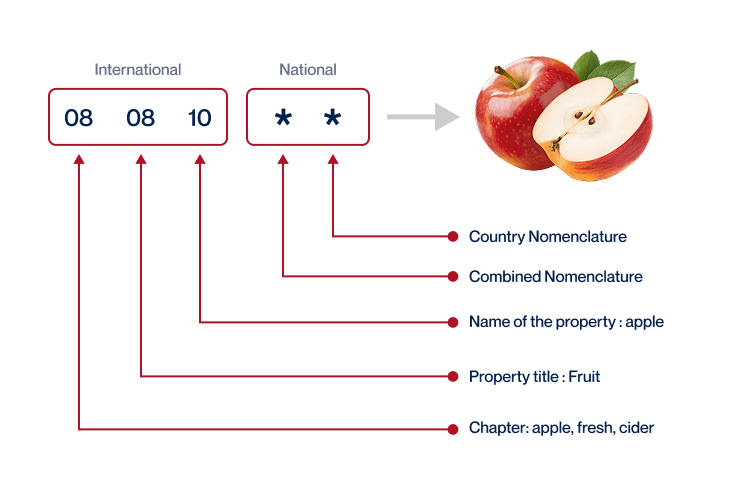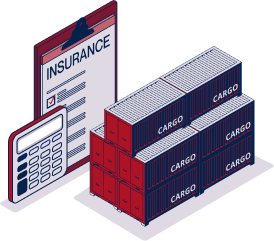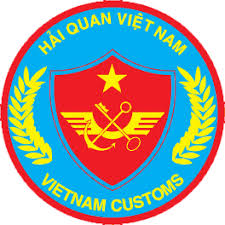Freight from Vietnam to Slovakia | Rates – Transit Times – Duties & Taxes
Shipping goods from Vietnam to Slovakia? Don't worry, you're not signing up for the new season of a reality show called Shipping Wars! One of the main challenges businesses encounter is deciphering freight rates, estimating transit times, and grappling with complex customs regulations. This comprehensive guide is designed to turn these challenges into smooth sailing. You'll discover information about the different kinds of freight options, from air to sea and everything in between, tips on customs clearance, a breakdown of duties and taxes, as well as tailored advice for businesses looking to streamline their shipping operations. If the process still feels overwhelming, let FNM Vietnam handle it for you! Our expert team simplifies the steps, turning what may seem like a mountain of challenges into a hill of success.
Which are the different modes of transportation between Vietnam and Slovakia?
Which are the different modes of transportation between Vietnam and Slovakia? The exciting journey of shipping goods from the bustling streets of Vietnam to the heart of Slovakia is like plotting a mountain hike. You've got the sprawling miles of road, vast oceans, and the open sky - all paths leading to your destination. But which trail gets your goods there most suitably? Ocean freight commands the sea route, while air freight soars through the air. The terrain may limit rail and road freight, but they can be ideal for neighboring countries. It's your choice - a thrilling helicopter ride, a serene boat trip, or a relaxing train journey.
Need help with your shipment?
Need assistance with your shipment? Dont hesitate to contact us even for a simple question. Choose the option that suits you
Live chat with an expert Chat on WhatsApp Free Quote 24hHow can FNM Vietnam help?

Sea freight between Vietnam and Slovakia
Ocean shipping between Vietnam and Slovakia forms a vital link in the global supply chain. This maritime connection ties two robust industrial centers together, with goods churning from Vietnam’s bustling port of Ho Chi Minh and washing up on the shores of Slovakia’s Europar Bratislava. Sea freight, often dubbed the tortoise of logistics, might be slow but it compensates with its pocket-friendly rates for moving high-volume goods. Think of it like getting a discount for buying in bulk – a win-win for businesses with large consignments.
However, seasoned shipper or not, shipping between these countries can be a labyrinth of complexities. It’s akin to a game of chess – one wrong move, and you’re stumped. Those who’ve tried their hand at it know that best practices can be as elusive as a hidden treasure chest. So, what if we could map out these elusive best practices for you? We will sail into all these specifics in this section, with a compass pointing to simpler shipping solutions and a life jacket to save you from the sea of common errors. Dive in!
Main shipping ports in Vietnam
Port of Hai Phong
Location and Volume: Located in the Northeast region of Vietnam, Hai Phong is the main maritime service provider for the northern part of the country. It effectively handles over 28 million tonnes of cargo annually.
Key Trading Partners and Strategic Importance: Hai Phong’s key trading partners include China, South Korea, and Japan. The port is strategically important due to its proximity to major industrial zones and its direct access to the East Sea and global shipping routes.
Context for Businesses: If you’re planning to do business with entities in Northeast Asian countries or Northern Vietnam, the Port of Hai Phong can provide efficient access to these markets due to its strategic location and robust cargo handling capacity.
Port of Ho Chi Minh City
Location and Volume: Situated along the Saigon River, the Port of Ho Chi Minh City is crucial for the southern region of the country, handling over 3.5 million TEUs in 2019.
Key Trading Partners and Strategic Importance: The Port of Ho Chi Minh City is a critical gateway for trade with the United States, China, and Singapore. Its strategic location in the country’s largest city and economic hub enhances its importance.
Context for Businesses: For businesses seeking to penetrate the vibrant markets of southern Vietnam or regions connected to the Mekong Delta, the Port of Ho Chi Minh City is an essential logistical consideration due to its high shipping volume and geographical advantage.
Port of Da Nang
Location and Volume: The Port of Da Nang, located in Central Vietnam, plays an integral role in the region’s trade, and it handled over 8 million tonnes of cargo in 2019.
Key Trading Partners and Strategic Importance: The port has strong trade links with Singapore, Japan, and Hong Kong. It serves as the main maritime gateway for the Central and Western Highlands of Vietnam.
Main shipping ports in Vietnam
Port of Hai Phong
Location and Volume: Located in the Northeast region of Vietnam, Hai Phong is the main maritime service provider for the northern part of the country. It effectively handles over 28 million tonnes of cargo annually.
Key Trading Partners and Strategic Importance: Hai Phong’s key trading partners include China, South Korea, and Japan. The port is strategically important due to its proximity to major industrial zones and its direct access to the East Sea and global shipping routes.
Context for Businesses: If you’re planning to do business with entities in Northeast Asian countries or Northern Vietnam, the Port of Hai Phong can provide efficient access to these markets due to its strategic location and robust cargo handling capacity.
Port of Ho Chi Minh City
Location and Volume: Situated along the Saigon River, the Port of Ho Chi Minh City is crucial for the southern region of the country, handling over 3.5 million TEUs in 2019.
Key Trading Partners and Strategic Importance: The Port of Ho Chi Minh City is a critical gateway for trade with the United States, China, and Singapore. Its strategic location in the country’s largest city and economic hub enhances its importance.
Context for Businesses: For businesses seeking to penetrate the vibrant markets of southern Vietnam or regions connected to the Mekong Delta, the Port of Ho Chi Minh City is an essential logistical consideration due to its high shipping volume and geographical advantage.
Port of Da Nang
Location and Volume: The Port of Da Nang, located in Central Vietnam, plays an integral role in the region’s trade, and it handled over 8 million tonnes of cargo in 2019.
Key Trading Partners and Strategic Importance: The port has strong trade links with Singapore, Japan, and Hong Kong. It serves as the main maritime gateway for the Central and Western Highlands of Vietnam.
Main shipping ports in Slovakia
Port of Bratislava
Location and Volume: Located at the crossroads of several major European transportation routes, this port is essential for the Slovakian economy due to its strategic location on the Danube River. The port has a shipping volume exceeding 300,000 TEU annually.
Key Trading Partners and Strategic Importance: The port serves a pivotal role in connecting Slovakia with Austria, Germany, Hungary, Serbia, and other Central and Eastern European countries. It is lauded for its intermodal transport capabilities that bind maritime, river, rail, and road transport into a seamless chain.
Context for Businesses: If you’re looking to expand into Central and Eastern European markets, the Port of Bratislava presents a unique advantage due to its multimodal logistics and robust infrastructural support. Given its employment of modern information systems for cargo handling, the port can provide efficiency in shipping operations.
Port of Komárno
Location and Volume: Situated on the left bank of the Danube River, this port is vital for supporting all sectors of the Slovakian economy, processing several thousand TEUs per year.
Key Trading Partners and Strategic Importance: It processes cargo from numerous countries in the Danube Basin, making it connected to the economies of Germany, Austria, Hungary, and more. Its strategic importance comes from its advantageous location near industrially active regions.
Context for Businesses: If your business is engaged in heavy industries like steelmaking or automobile manufacturing, the Port of Komárno may benefit you due to its proximity to key industrial regions. Its availability of modern technological equipment ensures efficient handling and transport of goods.
Should I choose FCL or LCL when shipping between Vietnam and Slovakia?
When it comes to sea freight shipping from Vietnam to Slovakia, picking between Full Container Load (FCL) and Less than Container Load (LCL), better known as consolidation, isn’t just about the price. The right choice can be a game-changer, impacting the delivery time and overall success of your shipment. So, should you go for consolidation or a full container? The answer isn’t one-size-fits-all. It depends on your specific shipping needs. This section will guide you through the pros, cons, and strategic implications of FCL and LCL to help you make an informed choice. Let’s dive in!
Full container load (FCL)
Definition: FCL (Full Container Load) shipping is when you have enough goods to fill an entire container, typically a 20'ft or 40'ft one. It's a term used in freight transport which describes an international sea freight service.
When to Use: FCL shipping is best utilized when the cargo volume exceeds 13/14/15 CBM (cubic meters). It offers advantages such as being cost-effective for large volumes and providing greater safety as the container remains sealed from origin to destination.
Example: Let's say a furniture manufacturer in Vietnam has a bulk order to transport 500 chairs to Slovakia. Each chair's volume is around 0.03 CBM, totaling 15 CBM for all chairs. In this case, using FCL shipping would be the optimal solution.
Cost Implications: While FCL shipping carries higher upfront costs, the per unit cost becomes considerably low, making it inexpensive for large shipments. In other words, the more you ship, the less you pay per cubic meter, which can drastically reduce your overall expenses. To understand the exact costs, businesses can request an FCL shipping quote from a freight forwarder. Remember, FCL also adds an extra layer of security, potentially saving costs related to lost or damaged goods.
Less container load (LCL)
Definition: LCL (Less than Container Load) shipping is a cost-effective method to ship small volumes of cargo. In LCL, various shipments are consolidated into one container for transportation.
When to Use: LCL freight is an optimal choice when the volume of your cargo is less than 15 cubic meters (CBM). This method provides flexibility, as you only pay for the space your cargo occupies, not the full container.
Example: Consider a Vietnamese Furniture manufacturer shipping a small quantity of designer chairs to a boutique in Slovakia. As the volume doesn't exceed 15 CBM, opting for LCL shipment would be practical and cost-efficient.
Cost Implications: While LCL shipping quote can be variable and based on the volume of goods, it is typically more affordable for low-volume shipments. High frequency of consolidated shipments between Vietnam and Slovakia can further reduce the cost. However, remember that it involves additional steps like consolidation and deconsolidation, potentially leading to slightly longer transit times. Consider these factors when selecting between LCL and FCL for your shipping needs.
Hassle-free shipping
Struggling to choose between consolidation or full container shipping from Vietnam to Slovakia? Let FNM Vietnam, your trusted freight forwarder, alleviate the stress. Our seasoned ocean freight experts consider critical factors, such as volume, weight, cost, and time to implement the ideal solution tailored to your needs. Regardless of the shipment size, we transform complex logistics into a smooth journey. Don’t let indecision stall your business. Contact us now for a free, no-obligation shipping estimation.
Shipping by sea freight, on average, takes approximately 35-50 days between Vietnam and Slovakia. Transit times depend on several aspects such as the specific departure and destination ports chosen, plus the weight and type of goods being transported. For a more accurate quote tailored to specific shipping needs, it’s recommended to get in touch with freight forwarding specialists like FNM Vietnam.
Now, let’s have a look at transit times between major sea ports in both countries:
| Departure Port (Vietnam) | Destination Port (Slovakia) | Average Transit Time (Days) |
| Port of Hai Phong | Port of Bratislava | 45 |
| Port of Da Nang | Port of Bratislava | 50 |
| Port of Ho Chi Minh | Port of Bratislava | 40 |
| Port of Quy Nhon | Port of Bratislava | 50 |
These transit times are average estimates and should be used as a guide, with actual times varying based on the factors mentioned. For precise information, it’s best to contact a freight forwarder.
How much does it cost to ship a container between Vietnam and Slovakia?
Unearthing the cost of shipping a container between Vietnam and Slovakia isn’t a clear-cut task. The price range swings widely from usually $50 to $900 per CBM. Why such a span? Ocean freight rates get influenced by aspects such as Point of Loading, Point of Destination, the choice of carrier, the nature of goods, and even the fickleness of monthly market fluctuations. So it’s unattainable to nail down a cast-iron cost here. But worry not, our shipping specialists are at your service to hone in on the best rates specifically for your needs. We pride ourselves on our tailored, case-by-case approach to cut through the complexity of shipping cost estimation.
Special transportation services
Out of Gauge (OOG) Container
Definition: Out of Gauge (OOG) containers are a specialized shipping option designed to transport oversized cargo that doesn’t fit into standard container dimensions.
Suitable for: Predominantly used for bulky, heavy, and oversized items.
Examples: These might include large machinery, industrial equipment, construction materials, or vast quantities of smaller items that require a loose cargo load.
Why it might be the best choice for you: If your business has goods that exceed standard container measurements, an OOG container can cater to your specific needs, minus the hassles of disassembly.
Break Bulk
Definition: Break bulk refers to goods that must be loaded individually, not in shipping containers or mass quantities.
Suitable for: Diverse range of non-containerized cargo such as oversized or heavy objects like machinery, building materials, and other cumbersome items.
Examples: This can apply to cargo such as construction equipment, generators, or ship parts.
Why it might be the best choice for you: For items too big or awkward for containers, break bulk shipping is a flexible, cost-effective solution. It enhances cargo security as each piece is accounted for individually.
Dry Bulk
Definition: Dry Bulk shipping involves transporting granular and non-packaged goods in large quantities.
Suitable for: Commodities that can be piled up like coal, grains, or minerals.
Examples: This type of shipping method is perfect for vast amounts of coal, grains, fertilizers, or fine aggregates used in construction.
Why it might be the best choice for you: This option offers cost-efficient way for businesses dealing in high-volume raw materials, reducing packaging needs and loading/unloading times.
Roll-on/Roll-off (Ro-Ro)
Definition: Roll-on/Roll-off (Ro-Ro) shipping involves vehicles and machinery that roll on and off a specialized ro-ro vessel under their own power or using a platform vehicle.
Suitable for: Any wheel-equipped cargo like cars, trucks, semi-trailer trucks, trailers, and railroad cars.
Examples: For businesses with products like automobiles or substantial machinery that require careful handling, the Ro-Ro option is ideal.
Why it might be the best choice for you: The convenience of driving your cargo directly onto the vessel and off at the destination minimizes the risks and provides an efficient means of transport.
Reefer Containers
Definition: Reefer containers are refrigerated shipping containers designed to carry goods requiring temperature-controlled conditions.
Suitable for: Used for perishable products including fruits, vegetables, fish, dairy products, or temperature-sensitive goods like pharmaceuticals.
Examples: Your business might benefit from this option if it deals with food items such as fresh fish or dairy products, or temperature-sensitive pharmaceuticals.
Why it might be the best choice for you: Reefer containers guarantee the freshness and integrity of your products by maintaining specific temperatures during transportation.
When shipping between Vietnam and Slovakia, consider these options and their unique benefits toward your cargo needs. To redefine your shipping experience and receive a free quote within 24 hours, get in touch with FNM Vietnam today. Get your customized solutions for all your shipping requirements.
Air freight between Vietnam and Slovakia
For speedy delivery of small, high-value items like electronics or pharmaceuticals, air freight from Vietnam to Slovakia is your winning ticket. This option promotes reliability and quick turnarounds, championing business growth. Imagine it this way: your shipment is on a fast-track marathon where time equals money.
However, too often, shippers trip on their first lap – understanding the cost. Some firms tumble into the trap of underestimating prices by miscalculating weight, like a chef misjudging ingredients for a new recipe, leading to costly disasters. Reading these pages will arm you with knowledge to avoid such pitfalls, ensuring your business success remains sky-high.
Air Cargo vs Express Air Freight: How should I ship?
Choosing between air cargo and express air freight while shipping from Vietnam to Slovakia might seem like a puzzle. Air cargo often involves sharing an airlines’ cargo space, giving a roomy, cost-effective option, while express air freight offers sole occupancy of a dedicated plane for a quick, though pricier, way to transport goods. Your decision mainly hinges on the urgency, budget, and specific requirements of your business. Stay with us, as unraveling this transportation enigma can simplify your international shipping process.
Should I choose Air Cargo between Vietnam and Slovakia?
Air cargo between Vietnam and Slovakia can be a superb choice, particularly when dealing with shipments over 100/150 kg (220/330 lbs), where costs become more competitive. Carriers like Vietnam Airlines and Slovak Cargo dominate this route, renowned for their dependability. Yes, transit times might be slightly longer due to set flight schedules, but the predictability can aid in precise planning. So, if budget management is paramount and your shipment size fits the bill, then lean towards air freight. A perfectly balanced mix of cost-effectiveness and reliability for your international shipping needs.

Should I choose Express Air Freight between Vietnam and Slovakia?
Express air freight, as the name suggests, is a fast, secure solution dedicated solely to cargo with no passengers onboard. If your shipment between Vietnam and Slovakia weighs under 100/150 kg (220/330 lbs) or is under 1 CBM, then express service could be the choice for you. Reliable providers include FedEx, UPS, and DHL. These firms offer robust tracking systems, quick delivery, and security, ensuring your goods reach their destination swiftly and safely. With optimized routes and prioritized handling, express air freight ensures even urgent shipments arrive punctually.

Main international airports in Vietnam
Tan Son Nhat International Airport
Cargo Volume: Processes over 400,000 metric tons of cargo annually.
Key Trading Partners: Mainly includes the USA, China, Japan, and South Korea.
Strategic Importance: Located in Ho Chi Minh City, the economic epicenter of Vietnam, it plays a key role in the global supply chain.
Notable Features: Enjoys a central location with direct flight connectivity to over 50 countries.
For Your Business: If your business frequently trades with Southeast Asia, Tan Son Nhat International could emerge as your central pivot point for maximizing cargo transport efficiency.
Noi Bai International Airport
Cargo Volume: Handles over 700,000 metric tons of cargo every year.
Key Trading Partners: Includes China, South Korea, Japan, and Taiwan.
Strategic Importance: As the largest cargo hub in northern Vietnam, it provides vital connectivity to key Asian markets.
Notable Features: Boasts an advanced cargo terminal and enjoys around-the-clock operational capability.
For Your Business: If you’re seeking a reliable route into northern Vietnam or nearby Chinese markets, Noi Bai International is an excellent option.
Da Nang International Airport
Cargo Volume: Deals with approximately 50,000 metric tons of cargo annually.
Key Trading Partners: Primarily China, South Korea, and Japan.
Strategic Importance: Positioned in the central part of Vietnam, it’s a crucial gateway for businesses aiming at mid-country markets.
Notable Features: Has modern cargo handling facilities and direct connectivity to Asian cities.
For Your Business: For those looking to penetrate central Vietnam or branching into Central Asian markets, Da Nang International provides a perfect launching pad.
Can Tho International Airport
Cargo Volume: Handles about 20,000 metric tons of cargo each year.
Key Trading Partners: Mainly Taiwan, South Korea, and Thailand.
Strategic Importance: Serves the Mekong Delta region, a prime agricultural hub in Vietnam.
Notable Features: Known for its efficient cargo handling abilities, particularly for agriproducts.
For Your Business: If your enterprise is dealing with agriproducts, Cần Thơ International can be an excellent choice offering easy access to the Mekong Delta.
Cát Bi International Airport
Cargo Volume: Manages around 30,000 metric tons of cargo annually.
Key Trading Partners: Includes China, Taiwan, and Thailand.
Strategic Importance: Situated in Hai Phong, the third-largest city and an important port city in Vietnam.
Notable Features: Specializes in handling sea-air freight, facilitating cargo moving from ocean to air routes.
For Your Business: For businesses considering a sea-air freight model, Cát Bi International could offer seamless logistical transitions.
Main international airports in Slovakia
M. R. Štefánik Airport – Bratislava
Cargo Volume: M. R. Štefánik Airport handled over 25,000 tonnes of cargo in 2019.
Key Trading Partners: The airport predominantly serves European countries, with high volumes of cargo going to and from Germany, the UK, France, and Italy. Intercontinental flights are also operational.
Strategic Importance: As the biggest airport in Slovakia, its strategic location, nestled in the heart of Europe, offers connections to key European markets and the potential for connecting flights globally.
Notable Features: The airport features a dedicated cargo terminal equipped with modern handling facilities, able to handle various types of cargo including hazardous material.
For Your Business: If your business is trading within Europe, this airport could serve as an ideal distal hub. Its modern facilities mean it can accommodate a wide variety of goods, from perishables to heavy equipment, so whatever your product, it can likely be shipped smoothly through this hub.
Košice International Airport
Cargo Volume: Košice International Airport, while smaller in scale than M. R. Štefánik, still manages several thousand tonnes of cargo annually.
Key Trading Partners: The airport predominantly facilitates cargo shipping between Slovakia and nearby European nations, with regular cargo flights to the UK, Czech Republic, Italy, and Germany.
Strategic Importance: It is the second-largest airport in Slovakia and its location in the eastern part of the country makes it strategically important for businesses operating in this region.
Notable Features: Despite its size, this airport boasts modern cargo handling facilities and capability to handle specialty cargo.
For Your Business: If your business operations involve Eastern Europe, Košice International Airport could be a valuable asset. Its location and reach could help streamline your logistics and reduce costs.
How long does air freight take between Vietnam and Slovakia?
Average shipping time between Vietnam and Slovakia by air freight is typically between 3 to 5 days. However, bear in mind, transit times can fluctuate depending on the exact airports involved, the weight of your shipment, and the type of goods being transported. To obtain the most accurate shipping times tailored to your specific circumstances, consider consulting a trusted freight forwarder like FNM Vietnam.
How much does it cost to ship a parcel between Vietnam and Slovakia with air freight?
Air freight costs between Vietnam and Slovakia range widely, generally falling between $3 and $10 per kilogram. However, final pricing varies tremendously due to factors such as departure and arrival airport locations, parcel dimensions, weight, and the nature of the goods. Hence, an exact rate can’t be provided without these specifics. Rest assured, our team works diligently to offer the most competitive rates, tailoring each quote to your unique needs. For a no-obligation, personalized quote within 24 hours, Contact Us today.
What is the difference between volumetric and gross weight?
Gross weight refers to the actual weight of your goods, including the packaging, measured in kilograms (kg). Volumetric weight, on the other hand, considers the amount of space your consignment occupies in the aircraft.
Now, let’s see how each is calculated. In Air Cargo, the volumetric weight is calculated using the formula: length (cm) x width (cm) x height (cm) / 6000. However, in Express Air Freight, we use a slightly different division factor: length (cm) x width (cm) x height (cm) / 5000.
For instance, you have a shipment of crafted wooden boxes packed in a carton measuring 50 cm in length, 40 cm in width, and 30 cm in height. And the gross weight of this package is 25 kg (around 55 lbs).
In Air Cargo, the volumetric weight is 50 cm x 40 cm x 30 cm / 6000 = 10 kg (roughly 22 lbs). While, in Express Air Freight, it’s 50 cm x 40 cm x 30 cm / 5000 = 12 kg (approximately 26 lbs).
Why does this matter? Freight charges are decided based on either the gross weight or the volumetric weight – whichever is higher. In our example, the charge would be based on the gross weight of 25 kg because it is greater than the volumetric weight. Figuring these factors out ensures there are no surprises when you’re billed for your shipment.

Door to door between Vietnam and Slovakia
When you hear Door-to-Door shipping, think of a busy bee transporting goods from Vietnam directly to Slovakia, with you barely lifting a finger. Incredible, isn’t it? This hassle-free method is a favorite because of its streamlined process and efficiency. So without much ado, let’s unravel this concept and see how it could be your next best logistic solution. Dive in.
Overview – Door to Door
Experience hassle-free shipping from Vietnam to Slovakia with our Door to Door service. A favourite amongst FNM Vietnam’s clients, this solution handles complexities from customs duties to transportation schedules for you, minimizing your shipping stress. While it’s a great timesaver, costs can surge due to expedited service charges. However, considering its efficiency and ease, it’s worth considering when planning your international transportation strategy.
Why should I use a Door to Door service between Vietnam and Slovakia?
Ever tried juggling while riding a unicycle? That’s what managing international logistics can sometimes feel like. If you want to leave the circus tricks to the professionals, consider opting for a Door-to-Door service between Vietnam and Slovakia. Here’s why:
1. Kiss stress goodbye: With Door-to-Door service, kick back and leave the load to us. We handle all the complexities of customs, freight, and trucking, while you focus on your business.
2. Never a second late: In the world of business, time is money. Our Door-to-Door service ensures your shipment reaches its final destination right on schedule. No more worrying about missed deadlines.
3. Expert care for complex cargo: Got intricate machinery or sensitive pharmaceuticals? Our specialised teams treat your complex cargo with lace-glove care, all the way from pick-up to drop-off.
4. End-to-End convenience: Imagine this – your shipment is picked from your Point A and delivered seamlessly to Point B in Slovakia. You don’t have to break a sweat dealing with multiple transport and logistics vendors.
5. That sweet sense of certainty: With Door-to-Door service, there’s a reassuring certainty that your goods are ushered through every transit point by diligent professionals. That’s one less worry off your plate!
In the grand scheme of global business, every piece of cargo has a story to tell. We ensure it’s one of a smooth, hassle-free journey with Door-to-Door services. Let us do the juggling, while you keep the wheels of your business turning.
FNM Vietnam – Door to Door specialist between Vietnam and Slovakia
Welcome to seamless, door-to-door shipping between Vietnam and Slovakia with FNM Vietnam. No need to stress about packing or customs, as our proficient team handles everything from start to finish. We deliver a full suite of services across all shipping methods for your convenience. What’s more, we provide a dedicated Account Executive to streamline your experience. Get your free estimate within 24 hours or connect with our consultants for uncomplicated and hassle-free shipping solutions. Let FNM Vietnam take the reins while you focus on what really matters – your business.
Customs clearance in Slovakia for goods imported from Vietnam
Customs clearance is a necessary hurdle when importing goods from Vietnam to Slovakia. This process involves many steps and can often seem complex due to its potential for unexpected fees, charges, and strict regulations. You’ll need to understand customs duties, taxes, quotas, licenses, and the import process or risk your goods being held indefinitely at customs. In the upcoming sections, you’ll gain a comprehensive understanding of these areas. It’s good to know that FNM Vietnam stands ready to assist you in navigating this challenging process. For an estimate to budget your project, we invite you to reach out to us with details of your shipment’s origin, goods’ value, and the HS Code. These details are essential for moving forward with your shipping project.
How to calculate duties & taxes when importing from Vietnam to Slovakia?
Understanding how to estimate duties and taxes for your imports from Vietnam to Slovakia involves juggling a few key elements, such as the country of origin, the Harmonized System Code (HS Code), the Customs Value, and the Applicable Tariff Rate, not to mention any additional taxes or fees that your products might attract.
The journey towards duty estimation starts with the identification of the country where the goods were produced or manufactured. Remember, this could differ from the country from which the goods are being exported. This is a vital piece of information because it contributes to the assignment of the correct tariff rate under international trade agreements. So, roll up your sleeves and prepare to delve into the world of customs duties and taxes. The aim is to help you navigate this complex process as smoothly as possible, reducing any unexpected costs and delays along the way.
Step 1 – Identify the Country of Origin
Step 1 – Identify the Country of Origin
Your journey to estimating import duties and taxes from Vietnam to Slovakia must start by recognizing the goods’ birthplace. Five reasons strongly underline why this process isn’t as straightforward as it seems.
First off, understanding the source country is crucial to leverage the Free Trade Agreement (FTA) between Vietnam and the European Union, which Slovakia is a part of, aptly named the EU-Vietnam FTA. This deal can significantly reduce or eliminate customs duties on certain goods.
Second, the classification of your product under the Harmonized System (HS) relies heavily on its origin. It’s like an address for your package in the massive world of international trade.
Third, it helps avoid penalties from Slovakian customs for not meeting import standards.
Fourth, it’s a key factor when calculating customs value, a critical part of your duties and taxes bill.
Finally, you staircase towards becoming a compliant importer, a reputation boost that makes future import experiences smoother.
But remember, specific goods such as pharmaceuticals, textiles, and certain agricultural products face import restrictions from Vietnam. Research thoroughly and seek expert advice on compliance matters to mitigate potential roadblocks. Going into the process prepared can save you time and money, while also helping you foster good relationships within the industry.
Step 2 – Find the HS Code of your product
The Harmonized System Code, or HS Code, is a standardized system of names and numbers used globally to classify traded products. These codes allow customs authorities to quickly and accurately identify products for the purpose of assigning the correct duties and taxes.
If you’re having trouble finding your goods’ HS Code, one of the easiest methods is to ask your supplier. Often, suppliers will be well-versed in the types of goods they are exporting and can provide you with this critical information.
However, if you aren’t able to retrieve the code from your supplier, don’t worry. We have a simple step-by-step process to help you find it yourself.
1. Access the Harmonized Tariff Schedule on the US International Trade Commission’s website
2. Once you’re on this site, simply input your product name into the search bar at the top.
3. After conducting your search, check the ‘Heading/Subheading’ column. This is where you’ll find the HS code for your product.
Note: Accuracy when selecting your product’s HS code is absolutely crucial. An incorrect code could lead to shipping delays or even potential fines, which can be a significant roadblock in your business’s operations.
Here’s an infographic showing you how to read an HS code. Remember, understanding this coding system will help you navigate international shipping more smoothly and efficiently.

Step 3 – Calculate the Customs Value
Understanding the customs value is crucial when you’re importing goods from Vietnam to Slovakia. It’s important to note that customs value differs from the product’s price. In fact, the customs value is the Comprehensive Insurance and Freight (CIF) value which includes the product price, international shipping costs, and insurance. For instance, if your goods cost $1,000, shipping is $200, and insurance $50, your CIF and thus your customs value would be $1,250. Remember, getting this calculation right is critical as it directly impacts the amount of import duties you’ll have to pay. Handling this can be complex, but grasping this concept will certainly make your shipping processes smoother and more predictable.
Step 4 – Figure out the applicable Import Tariff
Import tariffs are essentially taxes that a country imposes on foreign goods upon their entry. For goods imported from Vietnam to Slovakia, which is part of the European Union, the specific tariff can be determined using the TARIC System – European Customs.
For instance, suppose you’re importing bicycles (HS code 8712) from Vietnam. Here’s how to discover your tariff:
1. Access the TARIC Consultation Tool.
2. Input the HS code for bicycles ‘8712’ and select ‘Vietnam’ as the country of origin.
3. The tool will then display the duties and taxes imposed on this product.
Assuming a tariff rate of 14% is revealed, you’ll need to calculate your import duties using the cost, insurance, and freight (CIF) value. If the CIF value for the bicycles is $10,000 USD, then the import duty will be 14%10,000 or $1,400 USD. This means you will pay $1,400 USD in import duty to get the bicycles into Slovakia.
Understanding import tariffs is essential to anticipate costs and price your product appropriately in the destination market. Keep in mind, this is a simplified example, and the total landed cost may include other fees or taxes according to Slovakia or EU regulations.
Step 5 – Consider other Import Duties and Taxes
While you may have anticipated the standard tariff rate for your goods imported from Vietnam to Slovakia, it’s crucial to factor in other potential import duties and taxes. For instance, certain products might be subject to excise duty, a tax imposed on items such as alcohol, tobacco, or motor vehicles. Besides, when goods are sold at unfairly low prices, an anti-dumping tax may be applied.
Above all, though, is the value-added tax (VAT). As an importer, you are responsible for paying VAT at the same rate applicable in Slovakia for goods of the same category. This tax is imposed on the CIF value of the goods, plus the duty and any other taxes. For example, if the CIF value is $10,000 and the tariff rate is 10%, the VAT will be calculated on $11,000.
Picture this: with a VAT rate of 20%, the VAT will equate to $2,200. Hence, your overall duty and tax will be $3,200. Please note, these calculations are provided to illuminate the process, and depend on your exact goods and specific circumstances. Always cross-verify the current governmental regulations or consult with a customs broker to ensure your estimations are correct.
Step 6 – Calculate the Customs Duties
Calculating the customs duties when importing goods from Vietnam to Slovakia is a critical step to understand your expected costs. Essentially, the customs duty is a percentage of your goods’ customs value.
If your shipment doesn’t include Value Added Tax (VAT), the calculations would look like this: $1000 (customs value) x 5% (customs duty rate) = $50. So, your total customs duty is $50.
When VAT is also applied, the formula changes slightly. For instance, if you have $1000 worth of goods, a 5% customs duty, and the VAT rate in Slovakia, which is 20%, you’d calculate as follows: $1000 (goods value) + $50 (customs duty) x 20% VAT = $210 total charges, comprising $50 of customs duty and $160 of VAT.
For the most complex scenario, when you also have anti-dumping taxes and Excise Duty, the math will differ. Suppose your goods value is $1000, with a 5% customs duty, 20% VAT, 10% anti-dumping tax, and $50 Excise Duty. The formula becomes: $1000 + $50 (duty) + $100 (anti-dumping tax) + $50 (Excise Duty) x 20% VAT = $260. This sum includes customs duty, VAT, anti-dumping tax, and Excise Duty.
Navigating these costs can be overwhelming. The FNM Vietnam team is here to lead you through every step of the customs clearance process, regardless of your location. With our expertise, you’ll never pay more than necessary. Contact us today for a free quote within the next 24 hours.
Does FNM Vietnam charge customs fees?
While FNM Vietnam takes care of customs clearance for your goods, it won’t charge you customs duties. These government-imposed costs are distinct from clearance fees. As a trusted broker, FNM Vietnam merely facilitates the payment of these duties. You’ll be presented with official documents from customs office, assuring you pay the exact government-mandated amount. This transparency allows you to manage expenses with total confidence.
Contact Details for Customs Authorities
Vietnam Customs
Official name: General Department of Vietnam Customs Official website: http://www.customs.gov.vn/
Slovakia Customs
Official name: Customs Directorate of the Slovak Republic
Official website: https://www.colnasprava.sk/
Required documents for customs clearance
Unsure what paperwork you need for smooth customs clearance? We’ll unravel the details behind essential documents such as the Bill of Lading, Packing List, Certificate of Origin, and Documents of Conformity (CE standard), paving your way to hassle-free shipping internationally.
Bill of Lading
Sending goods from Vietnam to Slovakia? You’ll need your Bill of Lading, a crucial document marking ownership transition—it’s your item’s passport. Consider opting for a ‘telex release’, an efficient electronic alternative, freeing you from unnecessary paperwork hassle. Handling air cargo? The equivalent is your Air Waybill (AWB). Remember, don’t lose track of these; without them, your shipment might as well be invisible. Gain control, save time, ensure smooth sailing—or flying—with these shipping essentials. Stay organized and master your cross-border shipping journey.
Packing List
Shipping goods from Vietnam to Slovakia? Then a Packing List shouldn’t escape your attention. This document is your bible of details, logging every item you’re shipping, its weight, measurements, and quantity. Accurate? Absolutely. An error or oversight can take a wrong turn into issues with customs. Whether you’re shipping confetti cannons by air freight for a Bratislava New Year’s bash or sea freighting pho spices for a Vietnamese restaurant in Košice, your packing list ensures these items clear customs seamlessly. So, be precise, be clear, and double-check your packing list. An accurate list means easier transport and no unpleasant surprises at Slovakian customs.
Commercial Invoice
A Commercial Invoice is like your shipment’s passport when shipping from Vietnam to Slovakia. It’s critical to ensure accurate and detailed information. Key necessities include a detailed description of the goods, the Harmonized System (HS) code, the value of the goods, and details of the shipper and receiver. A common challenge might be aligning details with your Bill of Lading or Air Waybill, but consistency is essential to prevent customs clearance delays. Be thorough with your descriptions, make sure your shipment’s value is correctly stated, and remember the HS code is crucial to determining the duties payable. This document can make or break your shipping timeline, so precision matters.
Certificate of Origin
When shipping goods from Vietnam to Slovakia, don’t overlook the Certificate of Origin. This vital document certifies the ‘economic nationality’ of your goods, stating where they are manufactured. The primary advantage of having an accurate Certificate of Origin is that it could open certain doors for your shipment, like preferential customs duty rates. To illustrate, imagine your shipment of bamboo furniture is produced entirely in Vietnam. By declaring this on your Certificate of Origin, your shipment might be eligible for a lower duty rate, thus reducing overall costs. So, always ensure your Certificate of Origin specifies your goods’ country of manufacture correctly – it’s a small step that may save you a significant amount in the long run.
Certificate of Conformity (CE standard)
The Certificate of Conformity (CoC), carrying the CE mark, serves as your product’s passport when shipping from Vietnam to Slovakia, a proud European Union member state. This seal demonstrates that your goods meet health, safety, and environmental standards that are in compliance with the European market. It’s not a quality assurance, but a declaration that your product conforms with EU regulations. Think of it as the European equivalent to the US’s FCC Declaration of Conformity. Ensuring your goods have this certification before shipping can prevent customs delays and extra costs. So, before you pack those boxes, double-check that your goods carry the essential CE mark to ensure a smooth transit.
Your EORI number (Economic Operator Registration Identification)
Shipments from Vietnam to Slovakia require an EORI Number, your key to unlocking EU customs clearance. This unique ID, mandatory for all business-oriented import-export activities within the EU, is a linchpin in keeping tabs on goods movement. Imagine it as a passport for your freight, making its journey seamless across EU borders.
Getting your EORI number is hassle-free. Apply online via the European Commission’s Taxation and Customs Union website. It’s a one-time task, but its impact is huge, simplifying your trade paperwork and expediting shipments.
Think of it this way: With your EORI, your shipping from Vietnam to Slovakia becomes a smooth sailing journey on the international trade waters. Make sure you’ve got it covered before you dispatch. Remember, no EORI means, no clearance. It’s that vital!
Get Started with FNM Vietnam
Prohibited and Restricted items when importing into Slovakia
Knowing what you can and can’t ship into Slovakia can be headache-inducing. Missteps could fizzle your business operations, resulting in hefty fines or seizure of goods. Let’s unpack the complexities around Slovakia’s import restrictions, to ensure your freight sails smoothly through customs.
Vietnam – Slovakia trade and economic relationship
Vietnam and Slovakia have shared a fruitful economic relationship dating back to the 1950s, with bilateral trade constantly thriving over the years. The key sectors driving trade include heavy machinery, electrical equipment, and footwear. Notably, Slovakia has made significant investments in the Vietnamese textile industry. In 2024, mutual trade reached approximately €680 million, showcasing steady growth in merchandise trade. A remarkable milestone was the signing of the EU-Vietnam Free Trade Agreement (EVFTA) in 2020, which aims to eliminate 99% of tariffs, creating new opportunities for enhanced cooperation. Given this context, the path forward calls for strategic partnerships leveraging both countries’ industrial strength, promoting mutual economic growth.
Your Next Step with FNM Vietnam
Additional logistics services
Warehousing
Struggling to find reliable warehousing in Vietnam or Slovakia? Ideal storage conditions, like temperature control for sensitive cargo, can make or break your business. Don't miss the boat due to inadequate warehousing. Dive deeper to find the perfect warehouse solutions for your specific needs on our dedicated page: Warehousing.
Packing
Balancing the rigors of transport between Vietnam and Slovakia calls for expert packaging and repackaging. Partnering with a trusted agent ensures your goods, from fragile porcelain to hefty machinery, are well-protected and compliant with both countries' regulations. Take for instance, the assembly of wooden crates, fitting uniquely shaped ceramics, tailored to withstand varying shipping conditions. More info on our dedicated page: Freight packaging

Transport Insurance
Securing your goods in transit isn't like keeping your warehouse safe from fire. With Cargo Insurance, curtail unpredictable overseas risks for your valuable cargo. Picture this - turbulent seas tipping a container, a customs official mishandling a box, or unfortunate theft. Fret not, our service mitigates such risks, securing your peace of mind. Learn all there is to know on our dedicated page: Cargo Insurance.

Household goods shipping
Shipping personal effects from Vietnam to Slovakia? Don't sweat it! We manage even the trickiest objects - antique Vietnamese pottery or oversized Slovakian tapestries, no problem! Our team offers professional care and bumper-to-bumper flexibility for your precious items. Tap into our experience and make your move stress free. More info on our dedicated page: Shipping Personal Belongings.
Procurement in Thailand
Looking to manufacture in Asia or East Europe, but don't know where to start? We at FNM Vietnam simplify sourcing for your business through our comprehensive supplier management. We'll find the right suppliers for you, handle the procurement process, and bridge language barriers. For example, when shipping goods from Vietnam to Slovakia, we ensure smooth dealing with both Vietnamese and Slovak suppliers. Need more details? Find them at our dedicated page: Sourcing services.

Quality Control
Quality control is vital in your Vietnam-to-Slovakia shipping journey. It ensures your products match specifications, avoiding disappointing surprises upon arrival. Recall that time when off-color shirts arrived in Bratislava instead of vibrant ones? A QC intervention could've averted it. Rest easy, knowing your goods meet the mark. More info on our dedicated page: Quality Inspection

Conformité des produits aux normes
Ensuring your goods align with destination regulations is critical. Our Product Compliance Services are your trusty map—conducting diligent laboratory tests to secure required certification. It's like having a personal guide through a complex forest of rules. Missteps can be costly, akin to a US toy manufacturer facing fines for non-compliant products. Stay safe, stay compliant with us.


